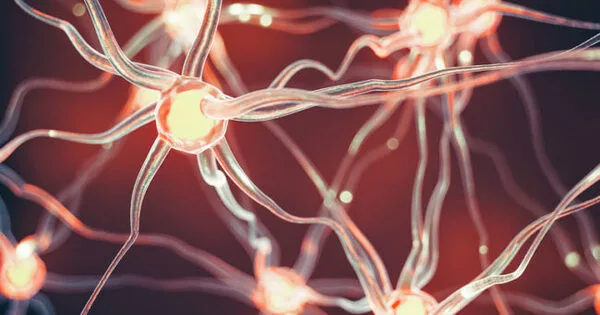Supplementation with the amino acid serine has been found to alleviate neuropathy in diabetic mice, according to a study. Neuropathy is a common complication of diabetes, characterized by damage to the nerves, which can cause pain, numbness, and weakness. The results of the study suggest that serine supplementation may offer a potential therapeutic approach for the treatment of diabetic neuropathy. However, it is important to note that these results are from a study in mice and further research is needed to determine the efficacy and safety of serine supplementation in humans.
The findings add to the growing body of evidence that certain ‘non-essential’ amino acids play important roles in the nervous system. The findings could lead to a new method of identifying people at high risk of peripheral neuropathy, as well as a potential treatment option.
Approximately half of people with type 1 or type 2 diabetes have peripheral neuropathy, which causes weakness, numbness, and pain, primarily in the hands and feet. The condition occurs when high levels of sugar in the blood damage peripheral nerves. Working with mice, Salk Institute researchers have discovered another factor that contributes to diabetes-related peripheral neuropathy: altered amino acid metabolism.
The researchers discovered that diabetic mice with low levels of two related amino acids, serine, and glycine, are more prone to peripheral neuropathy. Furthermore, by supplementing diabetic mice’s diets with serine, the researchers were able to alleviate neuropathy symptoms.
We were surprised that varying the amount of a non-essential amino acid had such a profound effect on metabolism and diabetic complications. It just goes to show that what we consider dogma can change depending on the circumstances, such as disease conditions.
Christian Metallo
The study, published in Nature, adds to the growing body of evidence that some “non-essential” amino acids play important roles in the nervous system. The findings could lead to a new method of identifying people who are at high risk of developing peripheral neuropathy, as well as a potential treatment option.
“We were surprised that varying the amount of a non-essential amino acid had such a profound effect on metabolism and diabetic complications,” says senior author Christian Metallo, a professor in the Salk Institute’s Molecular and Cell Biology Laboratory. “It just goes to show that what we consider dogma can change depending on the circumstances, such as disease conditions.” The study was co-led by Metallo and first author Michal Handzlik, a postdoctoral researcher in his lab.
Amino acids are the building blocks of proteins and sphingolipids, which are specialized fat molecules found in the nervous system. Low levels of serine force the body to incorporate a different amino acid into sphingolipids, altering their structure. These atypical sphingolipids then build up, possibly contributing to peripheral nerve damage. While the researchers observed this accumulation in diabetic mice, they also observed the same amino acid switch and sphingolipid changes in a rare human genetic disease characterized by peripheral sensory neuropathy, indicating that the phenomenon is consistent across many species.

Metallo’s team fed mice either control or serine-free diets in combination with either low-fat or high-fat diets for up to 12 months to see if long-term, chronic serine deficiency causes peripheral neuropathy. The researchers were taken aback when they discovered that a low-serine diet combined with a high-fat diet accelerated the onset of peripheral neuropathy in mice. In contrast, serine supplementation slowed the progression of peripheral neuropathy in diabetic mice, and the mice fared better.
The researchers also tested the compound myriocin, which inhibits the enzyme that replaces serine with another amino acid during the synthesis of sphingolipids. In mice fed a high-fat, serine-free diet, myriocin treatment reduced peripheral neuropathy symptoms. The importance of amino acid metabolism and sphingolipid production in the maintenance of a healthy peripheral nervous system is highlighted by these findings.
Serine deficiency has also been linked to a number of neurodegenerative disorders. Metallo and colleagues, for example, previously discovered a link between altered serine and sphingolipid metabolism and macular telangiectasia type 2, a condition that causes vision loss. Reduced serine levels in mice resulted in increased levels of atypical retinal sphingolipids and decreased vision. Serine is currently being studied for its safety and efficacy in the treatment of macular telangiectasia and Alzheimer’s disease in clinical trials.
Peripheral neuropathy is typically managed with dietary changes to reduce blood sugar levels, as well as pain relievers, physical therapy, and mobility aids, such as canes and wheelchairs. Foods naturally rich in serine include soybeans, nuts, eggs, chickpeas, lentils, meat, and fish, and serine supplements are inexpensive and available over the counter.
However, the researchers believe it is premature to advise diabetics to take serine supplements to prevent neuropathy. “You’d have to take a lot to make a difference, and not everyone needs extra serine,” says Metallo. “We need more time to understand human serine physiology and the potential drawbacks of supplementation.”
Metallo and Handzlik are currently developing a serine tolerance test, similar to the glucose tolerance test used to diagnose diabetes. “We want to identify those who are most at risk for peripheral neuropathy so that we can treat only those who will benefit the most,” Handzlik says.
















